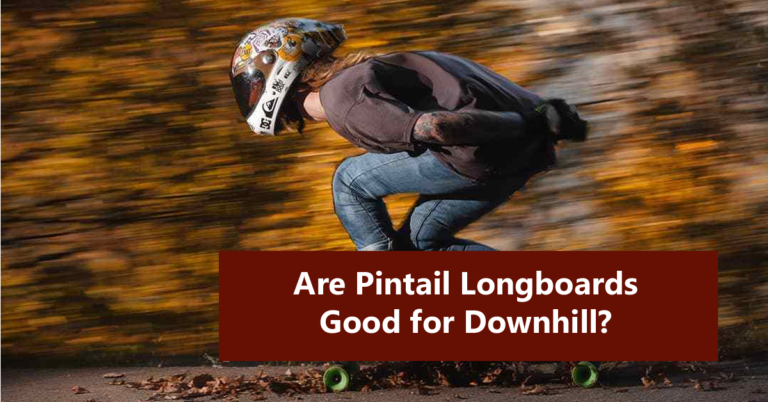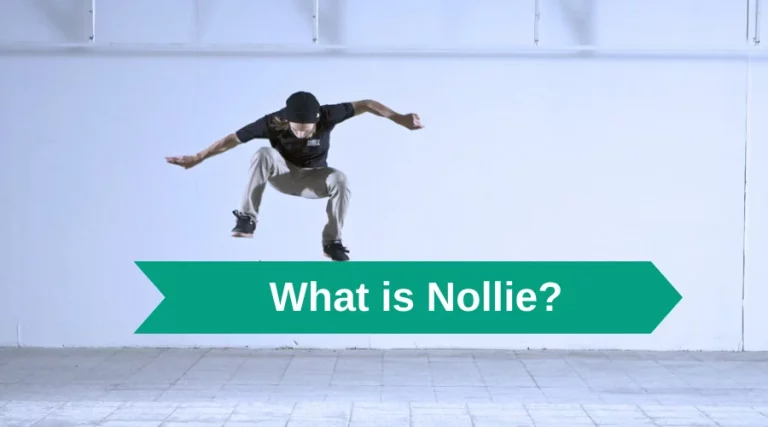How to Longboard Down a Steep Hill? (Downhill Riding and Longboarding)
Riders of all levels of experience can enjoy longboarding, an exhilarating sport that involves cruising down hills. While longboarding down a gentle slope can be easy, descending steeper inclines requires skill, balance, and a good deal of practice.
In this guide, we’ll break down the essential techniques you need to know to confidently longboard down a steep hill without injuring yourself or others.
Longboarding Downhill Techniques
Longboarding down steep hills can be thrilling, but you have to learn how to do it safely first.

The key to successful downhill riding is having a solid understanding of turning and carving techniques.
The rider must be comfortable with the speed they’re going and should learn how to control it by carving.
Proper foot positioning and balance also play a crucial role in avoiding falls.
It is important to wear appropriate safety gear to avoid injuries , such as a helmet, knee and elbow pads, and gloves. Gradually progress to steeper hills and always ensure that the rider can stop if necessary, whether by foot braking or slide stopping.
Master the Foot Brake on Your Longboard
Mastering the foot brake on your longboard is essential for safe longboarding downhill.
A straightforward way to brake is to put your back foot on the ground and press it down to slow your longboard. However, the “Swiss” foot brake is another alternative that involves you crouching down on your board with your front hand gripping it, lifting your back foot off, and placing it on the ground to create friction to slow down.
Getting comfortable with the foot brake requires frequent practice on manageable slopes that allow you to experiment with different methods, until you find the best one that works for you.
Remember to relax your body when you stop, keep your balance, and add speed slowly as you gain confidence.
Bomb a Steep Hill on a Longboard
Bombing a steep hill on a longboard is one of the most exhilarating experiences a rider can have. However, it can also be incredibly dangerous if not done with caution and proper technique.
One of the most important things to keep in mind when bombing a hill is to start on easy grades, not long steep hills, but mellower ones. Additionally, it is important to always start at the bottom and walk up for your first run to get a feel for the hill.
Sliding is also a crucial skill to learn for safely controlling your speed. Other key factors for a successful descent include properly lubed bearings, tight and balanced bushings, and tested nuts and bolts.
Turning Techniques for Longboarding Downhill
Most hills involve turns, and to navigate them safely, riders need to master carving and turning.
It is important to note that turning downhill requires practice and gradual progression, so riders should start with small turns before attempting sharper ones.
As with all aspects of longboarding, safety gear is crucial, and riders should wear helmets and pads to protect themselves in case of falls.
Carving Techniques for Longboarding Downhill
Once a longboarder has mastered basic turning techniques, they can move on to carving downhill.
Carving involves making gentle, sweeping turns that help control speed and maintain balance. Rather than abruptly turning the board, carving involves leaning into the turns and shifting weight gradually.
This technique allows the longboarder to smoothly traverse down steep hills and adjust speed while maintaining control.
With enough practice and incremental advancement, longboarders can become experts in carving downhill and safely enjoy the thrill of the ride.
Tips to longboard down a steep hill
- The rider’s weight should be evenly distributed on both feet, with the front foot being placed firmly on the board while the back foot controls the board’s movement. Keeping the knees bent allows for better control and stability, and the rider should always be aware of their posture to avoid leaning too far forward or backward.
- By making gentle turns back and forth, riders can slow their momentum without abruptly using their foot brake, which can be risky at high speeds.
- Two pieces of equipment that are a must for any downhill longboarding enthusiast are a helmet and slide gloves. A helmet protects the head in case of a fall, while slide gloves help maintain balance while sliding on the road surface. Additionally, padded clothing and knee and elbow pads can provide further protection.
- Practice and gradual progression are essential elements when it comes to longboarding downhill. It takes time and patience to master the techniques for controlling speed, stopping, turning, and carving. Beginners should start on smaller hills and gradually move up in increments to build confidence and skill.
Frequently Asked Questions
How To Longboard Downhill Safely?
To ensure a safe and enjoyable ride, it is important to wear appropriate safety gear such as a helmet, knee and elbow pads, and gloves. Additionally, it is crucial to start on easy grades and mellower hills before moving on to more challenging slopes. A key technique for controlling speed is carving tightly rather than foot braking, which can be dangerous at higher speeds. Maintaining balance and foot positioning is also important, as well as gradually progressing and practicing to improve skills.
How To Longboard Down A Steep Hill?
Always begin on easy grades, not long steep hills but mellower ones. Start at the bottom and walk up for your first run at any hill. Icy, round-lipped freeride wheels are best for learning, and mastering the foot brake is key.
For turning and carving techniques, rotting your body 90 degrees while pushing horizontally on your back foot and skidding your wheels is an effective way to slow down.
Remember to never go from the top of the hill if you don’t know how to slide yet, as it can be dangerous. Gradual progression is key, and taking cues from experienced riders on proper techniques is essential.
How To Stop On A Steep Hill On A Longboard?
Stopping on a steep hill on a longboard can be a daunting task, but with the right technique, it can be done safely. One effective method is the controlled slide, where the rider turns the board sideways and allows the wheels to skid across the pavement. To execute this technique, shift your weight towards your heels while keeping your knees bent and torso centered over the board. Next, carve towards the hill while turning the board sideways to initiate the skid.
How To Climb Down A Steep Hill Using A Longboard?
To climb down a steep hill, one needs to start by getting comfortable with the board and understanding how to maintain balance. It is important to keep the body weight over the front foot while keeping the back foot braced firmly on the board.
The next step is to take small and controlled steps to maintain control of the board while descending the hill. Always try to stay relaxed and focused while descending, as panicking could lead to loss of control. Finally, it’s crucial to engage the foot brake to decrease the speed when necessary.
Why Does My Front Foot Start Hurting If I Longboard For Long Periods Of Time?
It is not uncommon for longboarders to experience pain in their front foot after riding for long periods of time. This can be attributed to a few different factors. One possibility is that the rider is placing too much weight on their front foot, causing it to bear too much pressure and resulting in discomfort. Another possibility is that the shoes being worn do not provide enough support, causing the foot to become fatigued.
To avoid this issue, riders should focus on distributing their weight evenly between both feet and wearing shoes that offer ample support. Additionally, taking breaks during long rides and stretching out the foot muscles can help alleviate pain and prevent further discomfort.

I am a longboarding enthusiast and a blogger. On this blog, I share tips, tricks, and advice based on my experience. I am dedicated to helping newbies improve their skills and enjoy this fun activity to the fullest.
Disclosure:This post may contain affiliate links. If you click on a link and make a purchase, we may earn a commission at no additional cost to you. Learn more.







